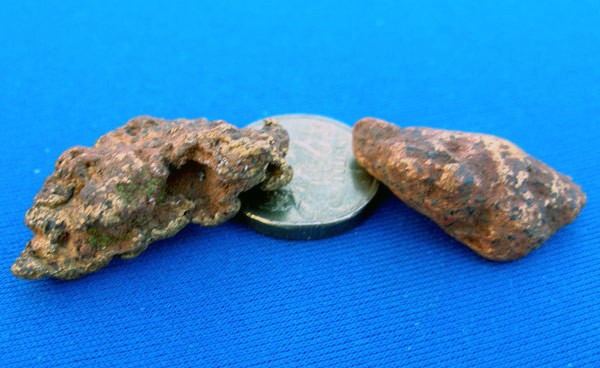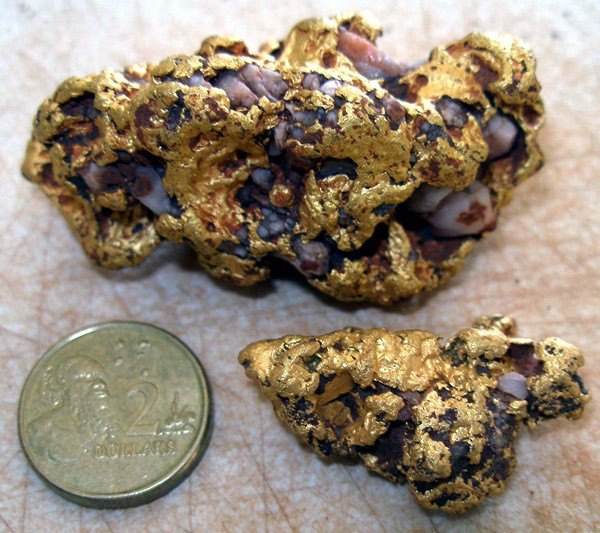-
Posts
1,950 -
Joined
-
Last visited
Content Type
Forums
Detector Prospector Home
Detector Database
Downloads
Everything posted by geof_junk
-

Official Minelab GPX 6000 Page
geof_junk replied to Steve Herschbach's topic in Detector Prospector Forum
No way it has to be before Easter or September School holidays or they will miss out on an excellent opportunity -

Thoughts On Accurate Pinpointing
geof_junk replied to Reno Chris's topic in Detector Prospector Forum
Quote....Agreed and some of those techniques work well or not so hot depending also on the size of the target. Edge on methods work well if the target is good sized, and can be almost required if the target is huge. They do not work well if the target is really small. Small targets may not sound off on edge until the are almost touching the edge of the coil. With a DD I typically step back and move forward rather than moving the coil backwards towards my feet but the net result is exactly the same.Fast target pinpointing and recovery is more of an advanced technique and exact methods depend on size of the target, size of the coil, configuration of the coil and likely approximate depth to the target. But it is something well worth the effort. If using a DD and the signal is small switching to mono and using the edge of the coil will help however if the signal drops expect it to be deeper than expected. On very deep nuggets of respectable size and quiet sound I set the detector on manual and approach from back where there is no sound and slowly bring the coil in listening for the start and end of the signal and mark the centre then do the same it at 90° or some convenient angle. Where they cross is target. Note the hole should be more a narrow trench than a circle to enable you to get the overburden out quickly. An added point is the uses of a pick. Most people must work in an office that I see using a pick on the gold fields. The force hitting to ground is combination of the weight and the speed of the pick head. If you watch a carpenter using a hammer you will see him/her use their wrist to double the speed of the hammer head. I find I can do more damage to the ground using a smaller handle pick with one hand than most people using both hands with a long handle pick. I hope that this is on topic as it reduces time wasted getting the gold. -

Thoughts On Accurate Pinpointing
geof_junk replied to Reno Chris's topic in Detector Prospector Forum
-
The site has some problems...... It was a good write up on coils in the preamble I got ¾ of the way though it. I will try and get on it again when the site get back up as it had a lot of technical details in it over 40 pages. The site error listed below. This site can’t be reached 41.67.20.41 took too long to respond.
-
You made him wear socks how did he manage that with his throngs (flip flops) 😆
-

A Site That Might Be Worth A Look.
geof_junk replied to geof_junk's topic in Detector Prospector Forum
It is a Texas outfit, well it the cognac. 🤣 -
From Garretts. How do I pinpoint a target?Slowly and methodically sweep your searchcoil from side to side, keeping it one to two inches above the surface. Overlap each sweep by advancing the searchcoil by about one quarter to one half of its diameter. Scanning in a straight line helps to keep the searchcoil level and the overlap sweeps uniformly while reducing the likelihood of lifting the searchcoil after each sweep. Listen for a peak in the audio sound. Hold the searchcoil one to two inches off the ground and slowly sweep it back and forth in an X pattern. Note where the sound becomes the loudest. The target should be located in the center of the imaginary X. Many of today’s modern metal detectors are equipped with an electronic pinpoint button. Read your owner’s manual for complete electronic pinpointing instructions. I would use the 90° method to get a better position.
-
So I thought I would throw a spanner into the discussion. Here goes. We have heard of the double D coils what about a triple D coil. Well that outside my knowledge but let look at a quad D coil the oldest ground balancing coil. Have a look at these links.....LINK....https://www.phys.k-state.edu/reu2011/nnorvell/Metal_Detector_Research.html and more detail.....LINK....http://41.67.20.41/bitstream/handle/123456789/18621/Metal%20Detector.pdf?sequence=1&isAllowed=y Are we on topic. _________________ Regards Geof. geof_junk Contributor Plus Number of posts : 794Location : Gippsland AustraliaRegistration date : 2008-11-11
-

A Site That Might Be Worth A Look.
geof_junk replied to geof_junk's topic in Detector Prospector Forum
You are on the ball. Sorry I not sure it was because I was thinking of the meal I was cooking for the wife or to much cognac. 😇 But this time I think I'm on the ball. -
Have not tried or connected but it is an Australian company I'm interested. ....LINK.... https://metaldetectingstuff.com/
-

Official Minelab GPX 6000 Page
geof_junk replied to Steve Herschbach's topic in Detector Prospector Forum
They are waiting for all the gold in Africa to be found so they can show it and hype up our release.🥱 -
You are spot on about pin pointing. I have got to the stage of not watching a lot of video finds now because of the wide spread lack of pin pointing and time they spend getting the gold out of the ground because of it..
-

Best Detector For The Worst Case Scenario
geof_junk replied to RONS DETECTORS MINELAB's topic in Detector Prospector Forum
Sometimes the junk will beat you. My wife and I got nuggets right up to the cans. We removed a lot of cans before the photo was taken how ever the small bits of rusted cans made it impossible to proceed. However managed to find two patches that yielded over a kilo of gold each with only a couple or so of steel rubbish no further than 5km away. -

Best Detector For The Worst Case Scenario
geof_junk replied to RONS DETECTORS MINELAB's topic in Detector Prospector Forum
All I can say is discriminating for gold is risky and only for larger than a coin nuggets in highly mineralization and junky areas. -
To me a sunbaker is one that you can see before you disturb the ground, that is the nugget can see the sun. It is OK if the detector sees it before you do.😁I have lost count of how many but it is around 30 but most are small in the range 2 to 4 grams. The one on the left has moss and lichen as it was hiding from the sun most of the time. It made the oz+ the other one was an oz also The large one on top was just under 5¾ oz and was sitting right out in the open enjoying the sun. The smaller one was in the ground hiding near by about 6" deep.
-

How To Navigate The New Mlrs
geof_junk replied to Goldseeker5000's topic in Detector Prospector Forum
If you are looking for a spot to do and the GIS data bank has records of mine/claim before 1950 load it in by it self in the area that you are interested in. My belief is in those days a lot of them had to be worked by hand and not loads full of speculation claims these days. -

Lookin For Advice For Gold Basin In Arizona
geof_junk replied to rob baum's topic in Detector Prospector Forum
Rob don't get dishearten, back when big nuggets were everywhere I spent 10 weeks 12+ hours 7 days a week detecting in Wedderburn Vic. Aust. and I found 2 nuggets less than you. In those days no one was teaching anyone how to use a detectors. As Gerry has said a lesson or two will speed up your learning curve and it is not only learning your machine that involved. Best of luck in the Gold Fields and keep at it. -

Lookin For Advice For Gold Basin In Arizona
geof_junk replied to rob baum's topic in Detector Prospector Forum
Some good advice above. Gold does move and spread out a lot in some ground. The trick is to cover a lot of ground correctly at the required speed. Have a look at this post, but start near known gold finds. .....Nugget Spread.... -

How Many Detectors Have You Owned?
geof_junk replied to Aureous's topic in Detector Prospector Forum
I had a dredge, pan, sluice and a pick, no detector. I bought the best Garretts at the time for the wife. She hated it so I got her Whites 6000 Coinmaster so I was left with a second hand Garretts ADS Deepseeker 😉. The battle was on who had the best detector. She got the first nugget over an ounce 😭 So when she was looking after the boys in the mornings I tried hard to catch up. Did that with a multiple ounce one (4 oz). From then on my job was to find the patches, which was done with a double digit patch of 26+ oz I got most of it 19 oz in the morning the rest when I took her out after lunch. After about 15 years use I upgrade to the Whites Goldmaster which was just release in Aust for Australia. As I knew my detectors I saw no reason to upgrade till I retired in 2003. Then I bought 2 of the lastest ML GP-3000 as we were going to West Aust. gold fields. Got the lastest Nugget Finders coils and got to learn the ML detectors which paid for themselves in the six months before we went to WA. I guess 15 years are up so another decision has to be made about some new ones and light weight is a prime factor. -

A Metal Detector Technology Question
geof_junk replied to Cascade Steven's topic in Detector Prospector Forum
Try looking at George C. Payne Inventions and Eric Foster-Carl Moreland https://patents.justia.com/inventor/george-c-payne ....LINK.... https://patents.justia.com/patent/8749240 .....LINK.....



